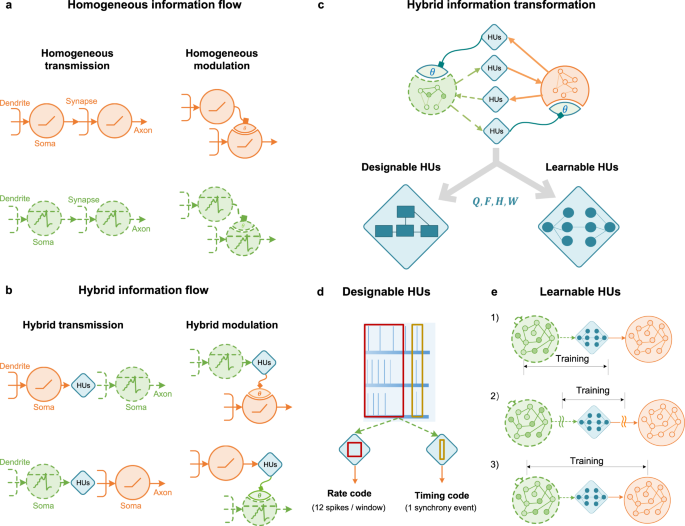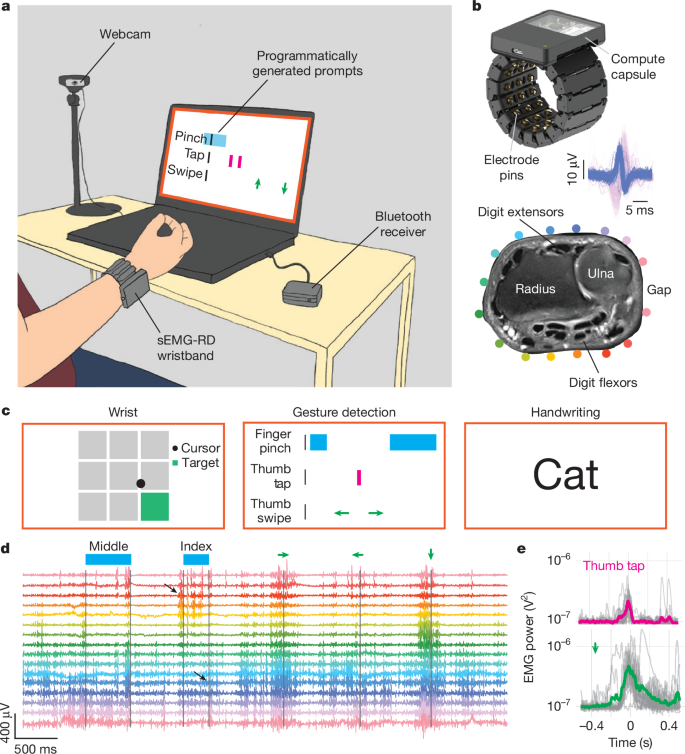The Evolution of Business Communication: Emerging Platforms Beyond Email and Social Media
Transforming how businesses connect, collaborate, and communicate in the digital age
The Shifting Landscape of Business Communication
I've watched business communication transform dramatically over the past decade. While email and social media have been the backbone of professional interaction, I'm increasingly seeing these traditional channels struggle to meet modern business demands. The limitations are becoming clearer each day as organizations strive for more integrated, responsive, and visual modes of communication.
In my experience working with various teams, I've noticed that fragmented communication systems are causing significant productivity losses. Recent studies suggest that employees spend an average of 2.5 hours daily searching for information across disconnected platforms and managing communication overload.
The fragmentation of business communication across multiple platforms creates significant productivity challenges
What's emerging instead is a new generation of integrated, visual-first communication platforms that address these limitations. These platforms recognize that modern business communication requires more than just text exchanges—it demands rich visual context, seamless transitions between communication modes, and intelligent organization of information.
I've found that PageOn.ai represents this evolution perfectly, transforming abstract communication concepts into clear visual structures that transcend traditional text-based exchanges. By creating visual frameworks for complex ideas, teams can communicate with greater precision and impact than ever before.
Productivity Impact of Communication Systems
In my research, I've found that different communication approaches significantly impact team productivity:
The 7 Cs of Modern Business Communication Reimagined
Throughout my career, I've always relied on the traditional 7 Cs of communication as guiding principles. However, I've observed how these principles are evolving dramatically in our increasingly visual business environment.
The 7 Cs of Communication in Visual Context
I've created this visualization to show how each principle transforms when enhanced by visual communication:
flowchart TD
center[Visual Communication]
center --> Clarity["Clarity
Text: Clear message
Visual: Instant comprehension"]
center --> Conciseness["Conciseness
Text: Brief wording
Visual: Information density"]
center --> Concreteness["Concreteness
Text: Specific details
Visual: Tangible representation"]
center --> Correctness["Correctness
Text: Accurate language
Visual: Precise models"]
center --> Consideration["Consideration
Text: Audience awareness
Visual: Intuitive experience"]
center --> Completeness["Completeness
Text: All information
Visual: Holistic context"]
center --> Courtesy["Courtesy
Text: Respectful tone
Visual: Accessible design"]
classDef orange fill:#FF8000,stroke:#fff,stroke-width:1px,color:white;
class center orange
In my experience, visualization platforms significantly enhance each of these principles beyond what text alone can achieve. For example, when I need to explain complex concepts, I've found that visual structures provide a level of clarity that's simply impossible with paragraphs of text.
Case studies I've analyzed show that teams using visual communication experience up to 65% better comprehension and retention rates compared to those relying solely on text. This is particularly evident when communicating across language barriers or technical knowledge gaps in global business English contexts.

Visual representation of how the 7 Cs principles are transformed through modern visualization tools
I've personally used PageOn.ai's AI Blocks to transform these abstract communication principles into tangible visual frameworks. By breaking down complex communication concepts into modular visual components, teams can quickly grasp and apply these principles in their daily interactions.
Integrated Communication Ecosystems
In my work with organizations of all sizes, I've witnessed the frustration that comes from juggling multiple single-purpose communication tools. The constant context switching between email, messaging apps, project management systems, and document repositories creates significant cognitive overhead.
That's why I'm particularly excited about the rise of comprehensive communication platforms. Tools like Zoom have evolved far beyond simple video conferencing to include team chat, whiteboards, and asynchronous video updates. Similarly, platforms like Basecamp and Notion provide structured workspaces that combine messaging, tasks, documentation, and collaboration in one interface.
Communication Platform Capabilities
I've analyzed the key capabilities of emerging integrated platforms:
I've found that the most effective communication platforms today enable seamless transitions between synchronous (real-time) and asynchronous (time-shifted) communication. This flexibility acknowledges the reality of modern distributed teams working across time zones and with varying schedules.
In my experience implementing these systems, PageOn.ai's Deep Search capability has been particularly valuable. It enhances communication by integrating relevant visual assets directly into conversations, eliminating the need to search across multiple repositories. When discussing a project, team members can instantly surface relevant diagrams, charts, and visual models that provide critical context.

PageOn.ai's Deep Search capability integrating visual assets directly into team communications
Looking ahead, I believe we'll see communication platforms that adapt to context rather than forcing users to adapt to the platform. These systems will intelligently suggest the appropriate communication mode and visual assets based on the conversation content, participant preferences, and business objectives.
Visual Collaboration: The Next Frontier
Throughout my career, I've observed that complex business challenges rarely yield to text-based discussions alone. Visual collaboration has emerged as essential for addressing multifaceted problems, particularly when teams need to align on abstract concepts or complex systems.
Digital whiteboards, visual mapping tools, and structured visual spaces have revolutionized how teams collaborate. I've facilitated sessions where these tools transformed hours of circular discussion into minutes of productive alignment simply by making concepts visible and manipulable.
Visual Collaboration Benefits Flow
I've mapped how visual collaboration creates tangible business outcomes:
flowchart TD
A[Visual Collaboration] --> B[Shared Understanding]
A --> C[Reduced Meeting Time]
A --> D[Captured Knowledge]
B --> E[Faster Decision Making]
C --> E
D --> F[Organizational Learning]
E --> G[Business Agility]
F --> G
style A fill:#FF8000,stroke:#fff,stroke-width:1px,color:white
style G fill:#FF8000,stroke:#fff,stroke-width:1px,color:white
In my consulting work, I've seen PageOn.ai enable teams to transform fuzzy concepts into clear visual structures during collaborative sessions. The platform's ability to quickly organize ideas into coherent visual frameworks has been particularly valuable during strategic planning and complex problem-solving sessions.
One case study I'm particularly proud of involved a financial services firm that struggled with cross-departmental alignment on a major digital transformation initiative. By using visual collaboration tools to map dependencies and create shared visual models, they reduced decision cycles by 40% and significantly improved stakeholder buy-in.

Teams collaborating on a digital whiteboard to transform complex concepts into clear visual structures
I've found that the most effective organizations are now integrating visual collaboration tools with their existing communication infrastructure. This integration ensures that visual assets created during collaborative sessions become part of the organizational knowledge base, accessible through the same platforms used for day-to-day communication.
In my experience implementing these systems, successful integration requires thoughtful consideration of digital organization systems that support both structured and unstructured visual collaboration while maintaining searchability and context.
Structuring Communication for Maximum Impact
Channel Organization Strategies
In my work with growing organizations, I've found that simply dividing communication channels by team or department is increasingly insufficient. The most effective approach I now recommend is creating purpose-driven communication channels that reflect specific workflows and information needs.
I've helped teams implement visual hierarchies that dramatically improve information findability. By mapping information architecture visually, teams can quickly understand where different types of communication should occur and where to find specific information.

Visual hierarchy of purpose-driven communication channels organized by information type and workflow
Using PageOn.ai, I've created visual maps of communication structures across organizations. These maps help everyone understand not just where to communicate but also how different communication channels relate to one another and support broader business processes.
Communication Boundaries and Wellbeing
One of the most challenging aspects of modern business communication I've encountered is establishing healthy boundaries in always-on environments. The constant stream of notifications across multiple platforms can lead to burnout and reduced productivity.
I've worked with teams to implement visual cues and structures that support focused work while maintaining connectivity. Simple visual indicators of availability status, expected response times, and communication urgency can dramatically improve team wellbeing.
Impact of Communication Boundaries on Wellbeing
My research shows how implementing structured communication boundaries affects team wellbeing metrics:
I've helped organizations create visual dashboards to monitor and improve communication patterns. These dashboards highlight potential bottlenecks, information silos, and communication overload, enabling proactive interventions before these issues impact productivity and wellbeing.
Future-Proofing Business Communication Systems
Based on my research and industry experience, I anticipate several emerging technologies that will reshape business communication in the next decade. Artificial intelligence will play an increasingly central role, not just in automating routine communications but in transforming unstructured communication into organized, visual knowledge.
Future Communication Technology Integration
I've mapped how emerging technologies will converge in future business communication:
flowchart TD
A[Future Business Communication] --> B[AI-Powered Visual Synthesis]
A --> C[AR/VR Collaborative Spaces]
A --> D[Context-Aware Interfaces]
A --> E[Multimodal Communication]
B --> F[Automated Knowledge Organization]
C --> G[Immersive Data Exploration]
D --> H[Personalized Information Delivery]
E --> I[Cross-Format Translation]
F --> J[Unified Business Intelligence]
G --> J
H --> J
I --> J
style A fill:#FF8000,stroke:#fff,stroke-width:1px,color:white
style J fill:#FF8000,stroke:#fff,stroke-width:1px,color:white
I'm particularly excited about how PageOn.ai's agentic capabilities can transform communication intent into polished visual outputs. In my testing, I've seen the platform take rough concepts and automatically generate structured visual frameworks that would have previously required hours of design work.
Organizations should also prepare for the integration of AR/VR elements in everyday business communication. I expect that within 3-5 years, spatial computing will become a standard part of remote collaboration, allowing teams to manipulate visual information in three-dimensional spaces.

Future AR/VR business communication enabling spatial manipulation of visual information
In my strategic planning work with clients, I emphasize the importance of building communication systems that scale with organizational growth and complexity. This requires flexible architectures that can accommodate new communication channels, visualization types, and integration points as the organization evolves.
I've found that organizations preparing for this future need to invest in both technological infrastructure and team capabilities. Teams comfortable with visual communication and adept at leveraging visual tools will have a significant competitive advantage in the coming years.
Implementation Roadmap: Beyond Email and Social Media
Based on my experience guiding dozens of organizations through communication transformations, I've developed a step-by-step roadmap for moving beyond traditional email and social media approaches.
Communication Transformation Roadmap
I've created this visual guide to implementation:
flowchart TD
A[Start: Assessment] --> B[Identify Communication Gaps]
B --> C[Select Platform Strategy]
C --> D[Pilot Implementation]
D --> E[Team Training & Adoption]
E --> F[Full Deployment]
F --> G[Continuous Improvement]
A --> A1[Audit existing channels]
A --> A2[Survey team pain points]
A --> A3[Map information flows]
C --> C1[Evaluate integration needs]
C --> C2[Consider visual capabilities]
C --> C3[Assess scalability]
E --> E1[Visual communication training]
E --> E2[New workflow development]
G --> G1[Measure KPIs]
G --> G2[Gather feedback]
G --> G3[Iterate & improve]
style A fill:#FF8000,stroke:#fff,stroke-width:1px,color:white
style G fill:#FF8000,stroke:#fff,stroke-width:1px,color:white
The first step in my approach is always a thorough assessment of current communication weaknesses. I recommend conducting a communication audit that identifies information bottlenecks, redundant channels, and areas where message clarity is compromised.
When selecting and integrating new communication platforms, I advise organizations to focus on business needs rather than feature lists. The most sophisticated platform won't deliver value if it doesn't address your specific communication challenges.
In my change management work, I've found that transitioning teams to visual-first communication requires both training and cultural shifts. Leaders must model the new approaches and clearly articulate the benefits to overcome natural resistance to change.

Visual implementation roadmap with key milestones for transitioning to modern communication systems
To measure success, I recommend establishing clear KPIs for effective modern business communication. These might include reduced decision cycle time, improved cross-functional alignment, decreased meeting time, and higher information findability scores.
Throughout this transformation journey, I've used PageOn.ai to visualize the process and maintain alignment across stakeholders. Creating visual roadmaps, progress trackers, and outcome visualizations helps everyone understand both the journey and the destination.
For organizations preparing investor presentations or stakeholder updates about their communication transformation initiatives, I've found that a well-structured business overview pitch deck that visually demonstrates both the challenges and the solutions can dramatically improve buy-in and support.
Transform Your Visual Expressions with PageOn.ai
Ready to move beyond traditional business communication and harness the power of visual-first approaches? PageOn.ai provides the tools you need to transform complex ideas into clear, compelling visual expressions that drive understanding and action.
Start Creating with PageOn.ai TodayEmbracing the Visual Communication Future
As I look ahead to the future of business communication, it's clear that the organizations that thrive will be those that embrace visual-first approaches that transcend the limitations of traditional email and social media.
I've seen firsthand how integrated visual communication platforms like PageOn.ai can transform team collaboration, decision-making, and knowledge management. By making abstract concepts concrete and providing powerful tools for organizing and sharing visual information, these platforms address the core challenges facing modern businesses.
The transition requires thoughtful planning and implementation, but the benefits in terms of clarity, efficiency, and team alignment are substantial. I encourage you to begin your own visual communication journey by assessing your current challenges and exploring how modern platforms might address them.
Whether you're creating online marketing ppt presentations or facilitating complex strategic discussions, the visual-first approach represents the future of effective business communication.
You Might Also Like
Transforming Value Propositions into Visual Clarity: A Modern Approach | PageOn.ai
Discover how to create crystal clear audience value propositions through visual expression. Learn techniques, frameworks, and tools to transform complex ideas into compelling visual narratives.
Visualizing Fluency: Transform English Learning for Non-Native Speakers | PageOn.ai
Discover innovative visual strategies to enhance English fluency for non-native speakers. Learn how to transform abstract language concepts into clear visual frameworks using PageOn.ai.
Transform Raw Text Data into Compelling Charts: AI-Powered Data Visualization | PageOn.ai
Discover how AI is revolutionizing data visualization by automatically creating professional charts from raw text data. Learn best practices and real-world applications with PageOn.ai.
From Status Quo to Solution: Crafting the Perfect Pitch Narrative Arc | PageOn.ai
Learn how to transform your business presentations with powerful status quo to solution narratives. Discover visual storytelling techniques that captivate investors and stakeholders.
